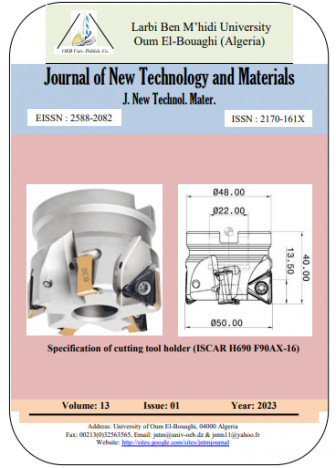Computational studies on side chain effects of five membered ring sulphur heterocycles on the corrosion inhibition of iron metal
Keywords:
Thiophene, corrosion inhibition;, molecular dynamics;, uantum chemical parameters;, physical adsorptionAbstract
When exposed to harsh settings, iron, one of the most useful metals on earth, is known to corrode. To explore the ability
to suppress corrosion, a variety of techniques have been employed, including computational methods. Quantum chemical
and molecular dynamic modeling techniques were used to study the corrosion inhibitory effects of thiophene (THIO) and
its derivatives, including 2-thiophene carboxylic acid (2-TCA) and 2-thiophene carboxylic acid hydrazide (2-TCAH), on the
surface of iron metal. Results from quantum chemistry investigations of the molecules' local and global reactivity
demonstrate their potential as inhibitors of iron surface corrosion, with THIO appearing to have the most promise.
Quenched molecular dynamic simulations of the examined molecules' adsorption and binding energies on the iron surface
revealed that the interaction is quite weak, with values found below the +100kcal/mol threshold value. As a result, the
molecules obey the physical adsorption mechanism in the following order: THIO > 2-TCA > 2-TCAH. This indicates that
the molecules are weakly adsorbed onto the surface of Fe(1 1 0) through van der Waals forces. The THIO molecule has a
higher degree of planarity than the other derivatives since it doesn't have any side chains that could interfere with its ability to
adsorb to the surface of the iron metal.





